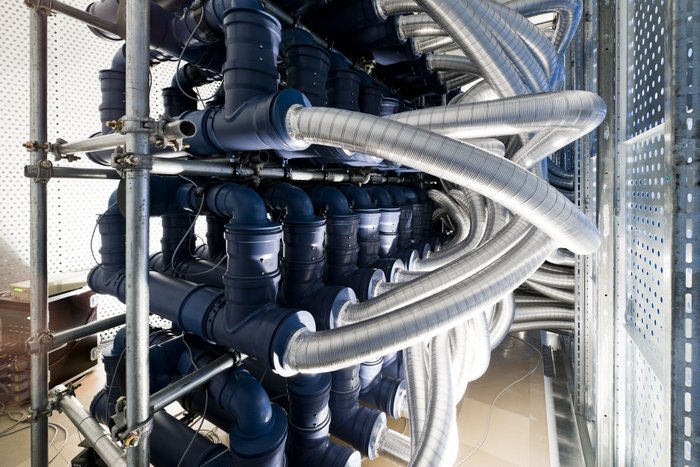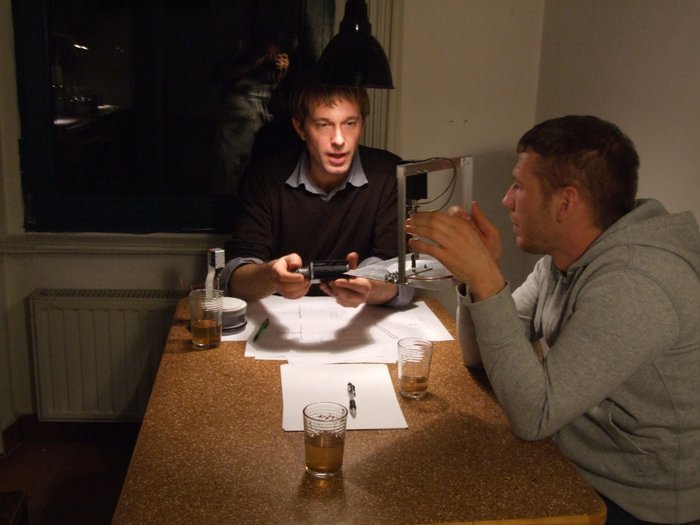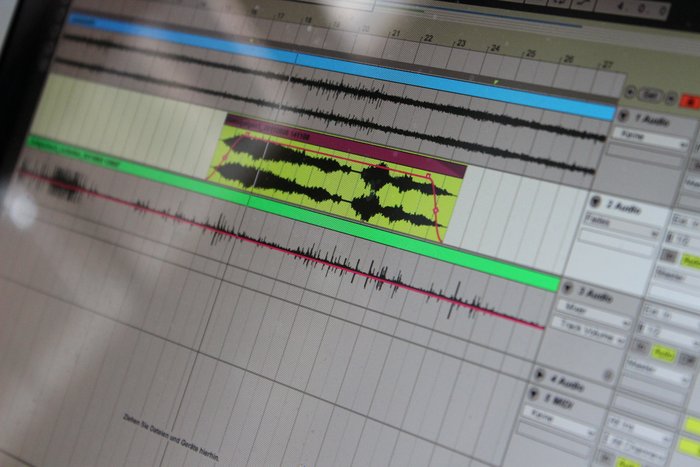Osmodrama via Smeller 2.0: Storytelling with Smells

WHAT IS SMELLER?
SMELLER is a genuine organ, an olfactokinetic art device for composing, producing, interpreting, programming, recording, storing and playing back compositions made up of scents and scent chords.
The SMELLER 2.0 project encompasses
The production of the hardware
The production of the control software
The production of the notation system
The production of the scent sources (basic components)
The creation of olfactokinetic scent compositions (“Smellodies”)
With the scent organ, thousands of scents can be played in place of music notes. They exude pure music for the nose, abstract or narrative, besides offering further possibilities to combine scents and commingle them with sound, image, film, theater or dance.
SMELLER 2.0, as an installation in closed or half-open spaces, coalesces into a true OLFACTORIUM.
”A gentle, hardly perceptible fresh breeze wafts across the room, inoculated with identity codes and suggestive auras of atmospheres and moments, of times and spaces, each supported and held by their immediately recognizable sounds. In the corners of the room swirl forlorn eddies of scent-laden air, slowly and invisibly intertwining.”
HOW DOES IT WORK?
Smeller 2.0 is a functional sculpture and mobile instrument, based on a pipe and chamber system in two blocks with dozens of source chambers and individually controllable air ducts. They are electronically controlled by a computer via more than a hundred magnetic valves.
The dynamically changing scents and compositions fed into the room are created through the electronic control of separately adjustable air streams – in the source chambers of which the corresponding scent sources are stored as props – blown into the space via electronically controlled valves in the correct, complex sequence and combination. A stream of even, homogenous fresh air flows through the room at a constant speed, conveying the constantly changing scent and odor nuances and chords evenly throughout the room, and finally leaving the room again with them in tow. The complete ambient air is exchanged 1-2 times per minute, so there is no build-up or undesirable mixing in the temporal sequence of the changing chords.
The control hardware consists of a midi keyboard, a computer, digital-to-analog converters, relays, midi adapters, corresponding ports and cable trees for the electronically controllable magnetic valves, or organ flaps.
Control software
The control software runs on a conventional computer, functioning similarly to the sampling software used in music and sound processing, with multi-track timelines and editing. The software is programmed for recording and playing back dynamically modulated scent sequences. Compositions of any length can be input, recorded as midi files, saved, archived and played back. The files can also be transmitted via the Internet.
Notation system
With the specially developed notation system, scents can be written down as music notes and hence composed into chords, melodies and rhythms. The scent notes for the time-based medium SMELLER 2.0 can be saved in machine-readable form in the midi data format, and then subjected to the same editing processes as music. The keys on the keyboard play the scents, deploying the base scent components that are assigned to the notes. In the end, scents blossom forth instead of tones.
(Wolfgang Georgsdorf, Smeller 2.0 log)
The compositions – so called ‘Smellodies’ – might be short mood pictures, abstract chords, or long evening-length stories, performed either live according to scores or improvised by scent organists. In longer programs or non-stop operation they can be played back from the hard disk as archived compositions via the SMELLER 2.0 as organ and playback /end device. Out of 8 x 8 basic scents you can in theory create a variety of smells numbering 2 to the 64th power.
Work is currently being done on the following narrative scent concerts:
- “A Childhood”
- “House Fugues”
- “Miniatures”
- “Silent Pieces”
- “Mountain Time”
- “The Caravan”
An excerpt from “A Childhood” is for example a movement entitled “My First Circus,” in which the smells of popcorn, nuances of tiger urine, elephant droppings, litter for animal cages, cotton candy, sawdust, sweat, caramel apples, horse stalls and various other notes swell and reside again, or flow into one another.
THE ORIGIN OF SMELLER
Without an instrument capable of reproducing and “musically” mixing a constantly changing series of scents, the creation of an olfactory discipline, devoted to the dramaturgy of smells would be unthinkable. Until now, no such instrument seems to have existed to exploit the tremendous potential inherent in such a discipline.
On the basis of the experience gathered with that machine and the research carried out in the meantime, the transmedia, interdisciplinary project “SMELLER 2.0 – Scent Organ / Olfactorium” (SMELLER 2.0 for short) commenced in September 2011. The first public deployment was at SINNESRAUSCH at the OK in Linz / Austria, a several-month exhibition geared for great public appeal (June – September 2012).
FURTHER DEVELOPMENT
The artistic, cultural and psychological effects of a functioning olfactory performance and recording system can be experienced with the realisation of SMELLER 2.0, paving the way for the system to be further developed as a new discipline for artistic articulation and interdisciplinary plexus.
Currently talks are being held with additional presentation venues, and enthusiasm has been signaled for mounting installations and concerts with SMELLER 2.0 as soon as its function and impact have been demonstrated.
Next steps:
– Smeller.Net City Scent Web: Internet Transmission of Smells and collective composition of Smellodies
– The Smeller Circus (Concert and Exhibition Tour)
1996 – 2012
production period
september 2011 – may 2012
production studio
OK Lab, Linz / Austria
concept, development, execution
Wolfgang Georgsdorf
premiere
june – september 2012: exhibition SINNESRAUSCH, Linz/Austria
upcoming exhibitions
- tba
- Polypropylene tube system
- Electronic components
- Aluminium valve components
- Flexible tubing
- Perforated steel walls
- Machine elements in metal and plastic
- Ventilation system with air flow control components
- High power ventilators
- Steel support structure
- Natural and synthetic scent sources in liquid and solid form
- Soundscapes over a hi-fi sound system
- Computer controller
- MIDI-Software (Musical Instrument Digital Interface)
- Relays
- Cables for data and electricity
size / measurements
- 650 x 320 x 200 cm
- 1,5 T







A unique prototype has been developed capable of delivering olfactory dramatic art / olfactory poetry, and thereby opening up a practical cultural field for experimentation and experience.
This long-cherished concept and development of artist Wolfgang Georgsdorf has finally become real.
the idea: conceptual foundations





▲ top
the machine: constructing & assembling








▲ top
the scents: creating basic components




▲ top
the software: developing a notation system

▲ top
Smellodies: composing dramatic “scentscapes”



soundscapes: combining sound and scent




▲ top
the olfactorium: performing Smeller 2.0

